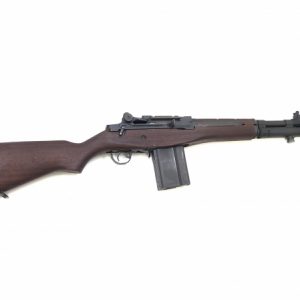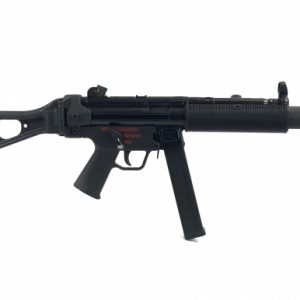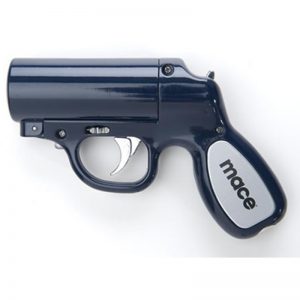Description
New US manufactured Barrel 1-10 twist New US manufactured Receiver Original Beretta (Italy) Parts including Folding Parartrooper Stock and Magazines Country of Manufacture: United States Manufacturer: James River Armory Mfg. Part Number: BM59-PARA Caliber/Gauge: 7.62mm NATO Barrel Length: 19.3 inches Weight: 9.7 lbs Each Paratrooper comes in a Hard Case – Accessories – Manual – 2 x 20 Rd. Magazines – Bi-Pod and has a one year warranty from JRA The original M1 Garand became the world’s first standard-issue self-loading rifle and served in the millions with American and Allied forces throughout World War 2. During the conflict, the rifle played center stage to countless battles and was known as a robust and dependable weapon. However, it was tactically limited in that it could only fire from an eight-round “clip” at any one time. Additionally, its single-piece all-wood stock made it a heavy weapon to wield for extended actions. The M1 did go on to see extensive service with American forces in the Korean War (1950-1953) and appeared in limited numbers during the Vietnam War. An American evolution of the series delivered the similar M14 with its detachable box magazine among other refinements. Following the end of World War 2, the M1 was produced under license granted to the Italian concern of Beretta (Pietro Beretta SpA) to which these examples stocked the inventory of the Italian Army. Within time, these Beretta Garands were also being delivered to the armies of Denmark and Indonesia. By the late 1950s, it became necessary for the Italian Army to upgrade its standard arms. However, instead of pouring millions into a local rifle design-and-development program, it was decided instead to modernize the resilient M1s on hand. As such, Beretta took the base M1 form and added a larger detachable box magazine of 20 rounds. Additionally, a full-automatic firing mode was implemented for suppression fire and the firing action (specifically the return spring and gas operation) was only slightly reworked to “play nice” with the new 7.62x51mm NATO standard round (the original M1 was already chambered for the similar 7.62mm cartridge). To round out the changes, a new trigger unit was developed and installed, a rubber recoil pad added and the barrel left largely unchanged (though support for grenade launching was added as was a flash suppressor). The end result was a modern, select-fire battle rifle designed for the rigors of battlefield use. While utilizing the new 20-round detachable box magazine, the Beretta redesign could also make use of charger “clips” through the receiver action which was left unchanged from the M1. The new rifle – known as the “Beretta Model 59” or simply “BM59” – was formally adopted for service in 1959 (as its designation suggests). A bipod was optional for stabilized fire. The basic BM59 appeared in four major marks. The BM59 Mk I was the initial production model with an all-wood solid stock with an integrated pistol grip. The BM59 Mk II also featured an all-wood solid stock though incorporated a full pistol grip to help improve stability during full automatic fire. The BM59 Ital TA (BM59 Mk III) was intended for mountain infantry. As such, the design sported a reduced length stock with a collapsible skeletal butt, a standard-issue bipod, flash hider and a pistol-style grip. All of these changes made for a more compact system suitable for mountain fighting. Another development included the BM59 Ital Para which was intended for Italian paratroopers. For all intents and purposes, the BM59 Ital Para fell in line with the aforementioned BM59 Ital TA save for a shorter barrel and removable flash hider. The BM59 Mk IV was intended for the squad support role and fitted with a heavy barrel, heavy bipod and lighter plastic buttstock. A pair of “demilitarized” versions then appeared – the BM62 and BM69 – each with their own differentiating features. The BM62 fired from a 10-round detachable box magazine. Both civilian versions were semi-automatic-fire only. The BM59 was ultimately utilized by militaries beyond Italy. This included Algeria, Argentina, Bahrain, Eritrea, Ethiopia, Indonesia, Libya, Morocco and Nigeria. Both Indonesia and Nigeria established localized license production through the Bandung Weapons Factory and the Defense Industries Corporation respectively. BM59s survived in Italian Army service up to 1990 before being replaced by the Beretta AR70/90 assault rifle series. Detailing the development and operational history of the Beretta Model 59 (BM59) Automatic Battle Rifle. Entry last updated on 7/1/2018; Authored by Staff Writer; Content ©www.MilitaryFactory.com




